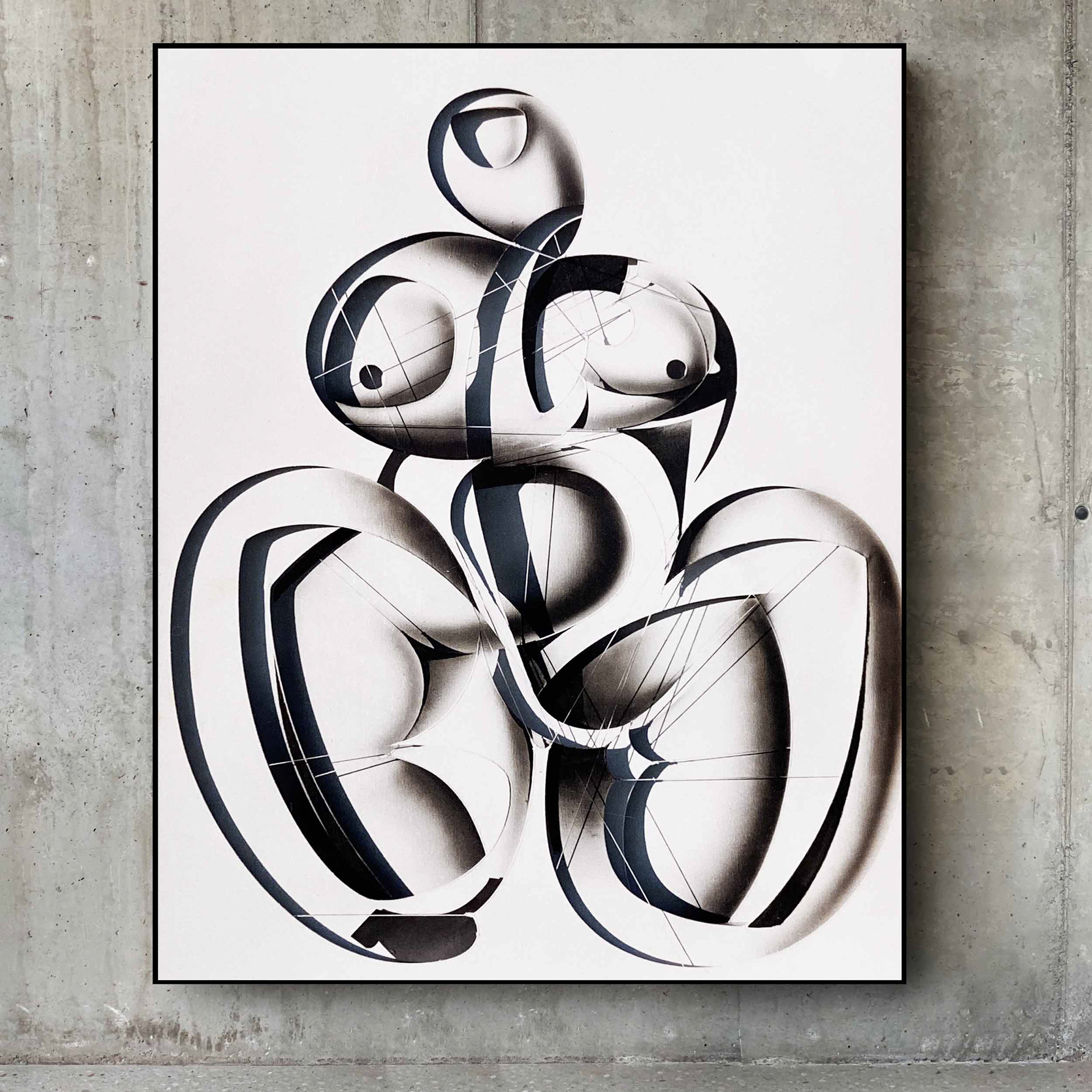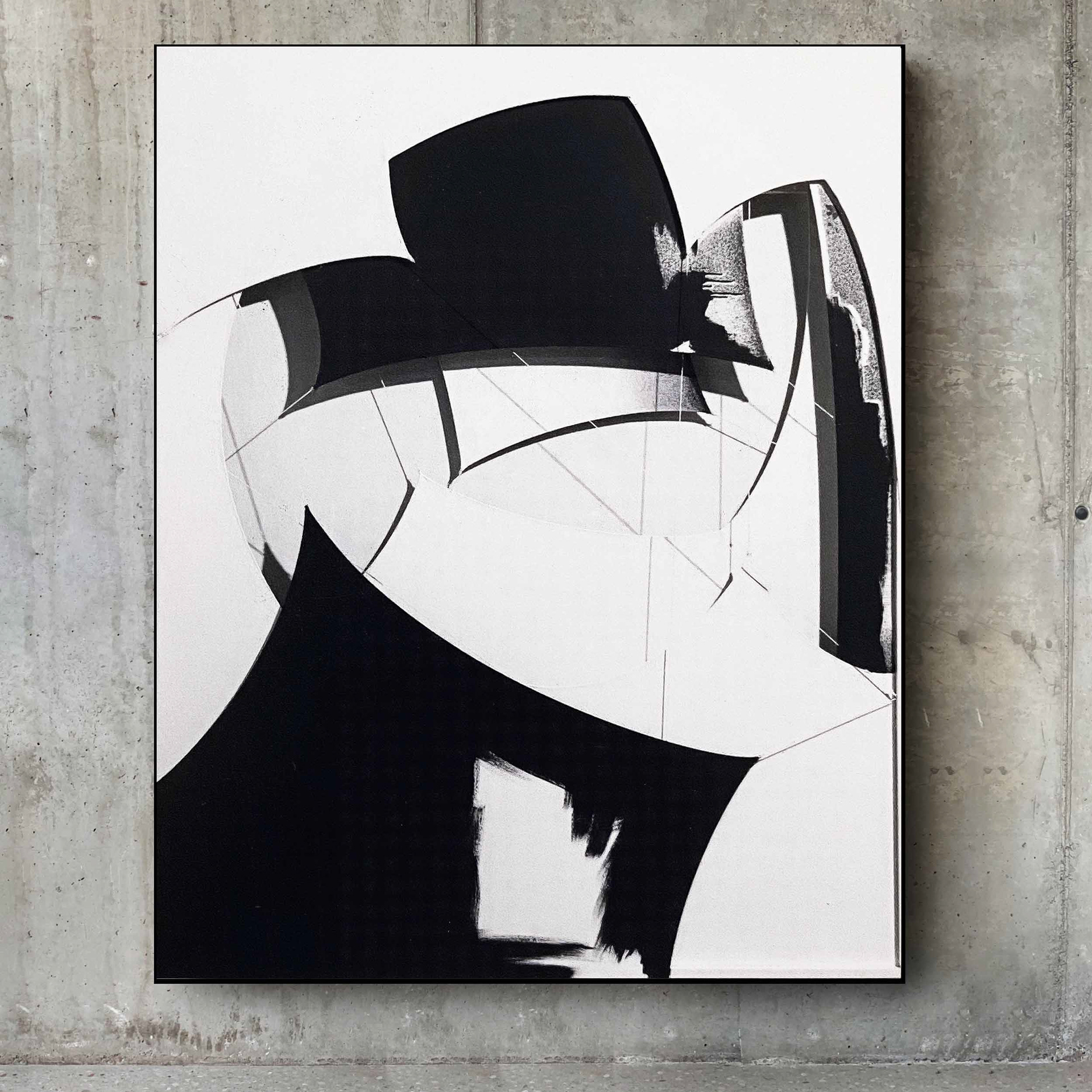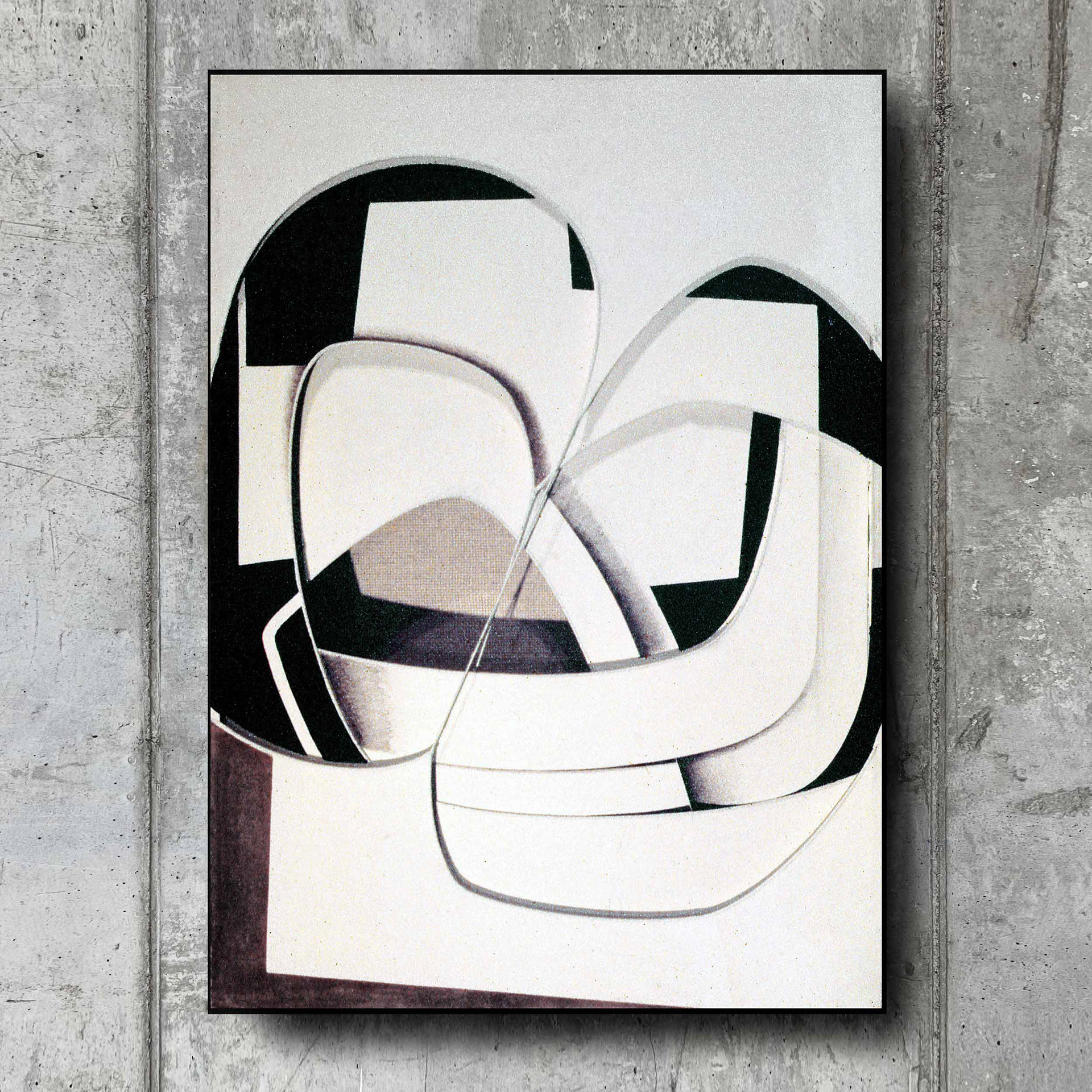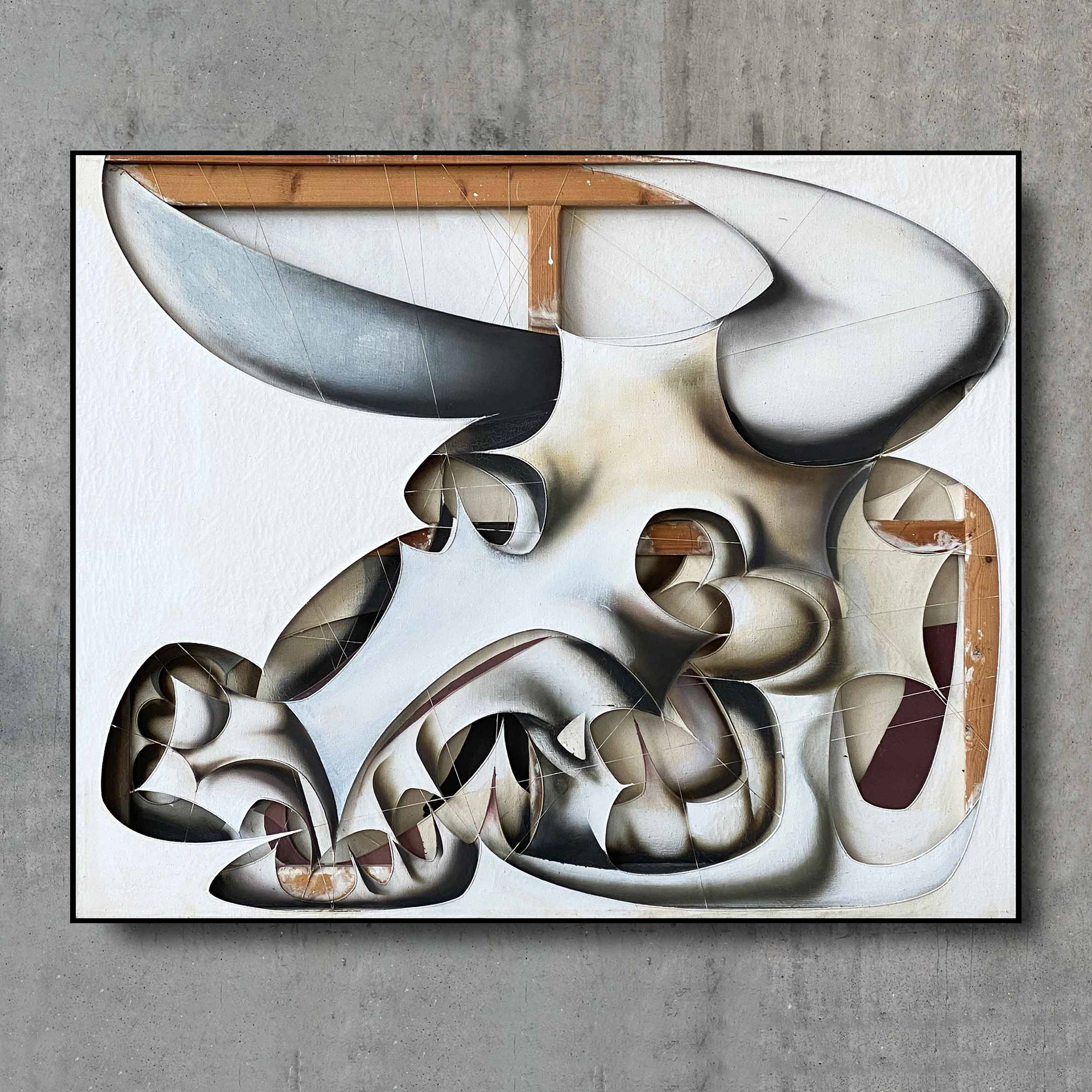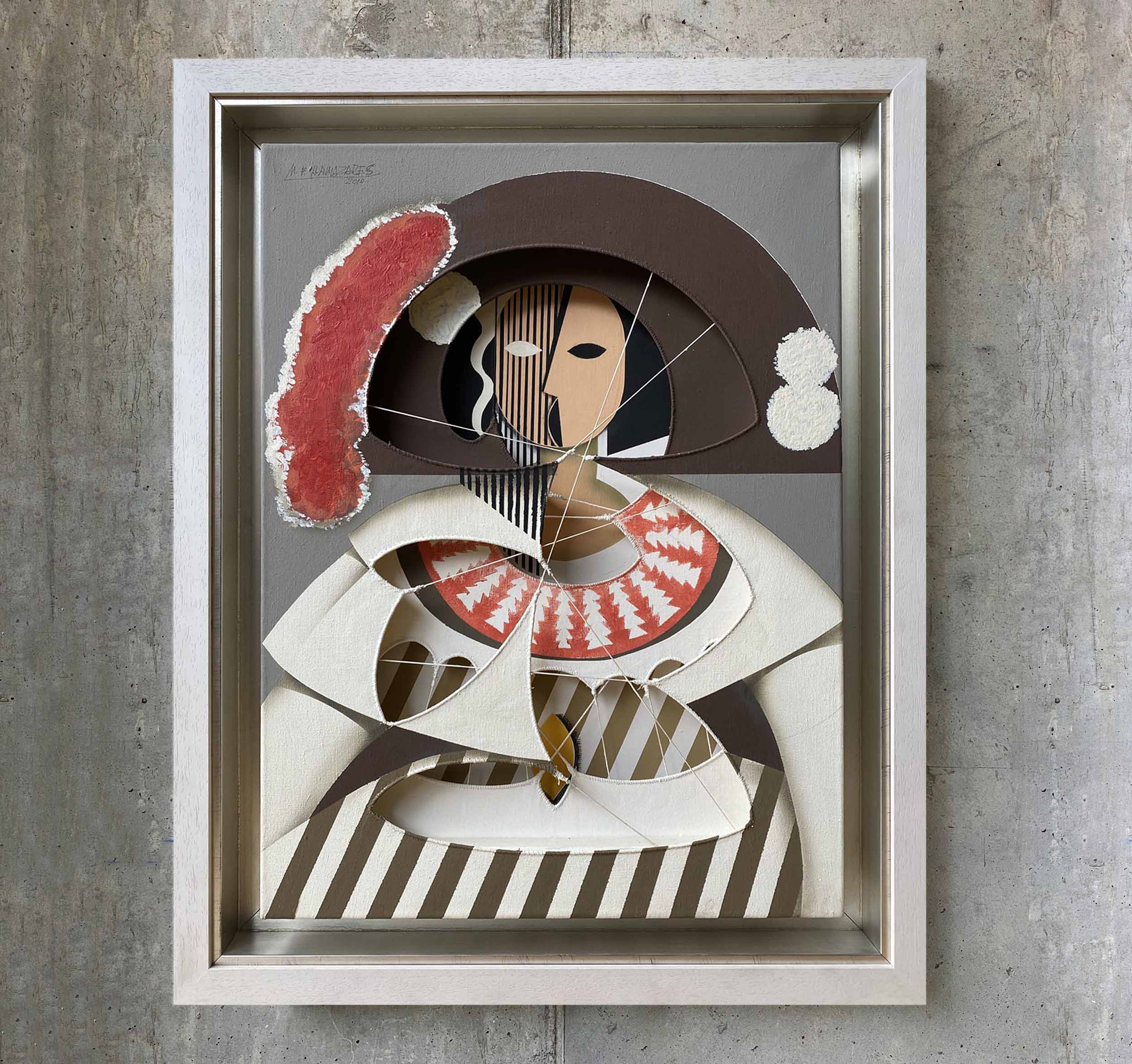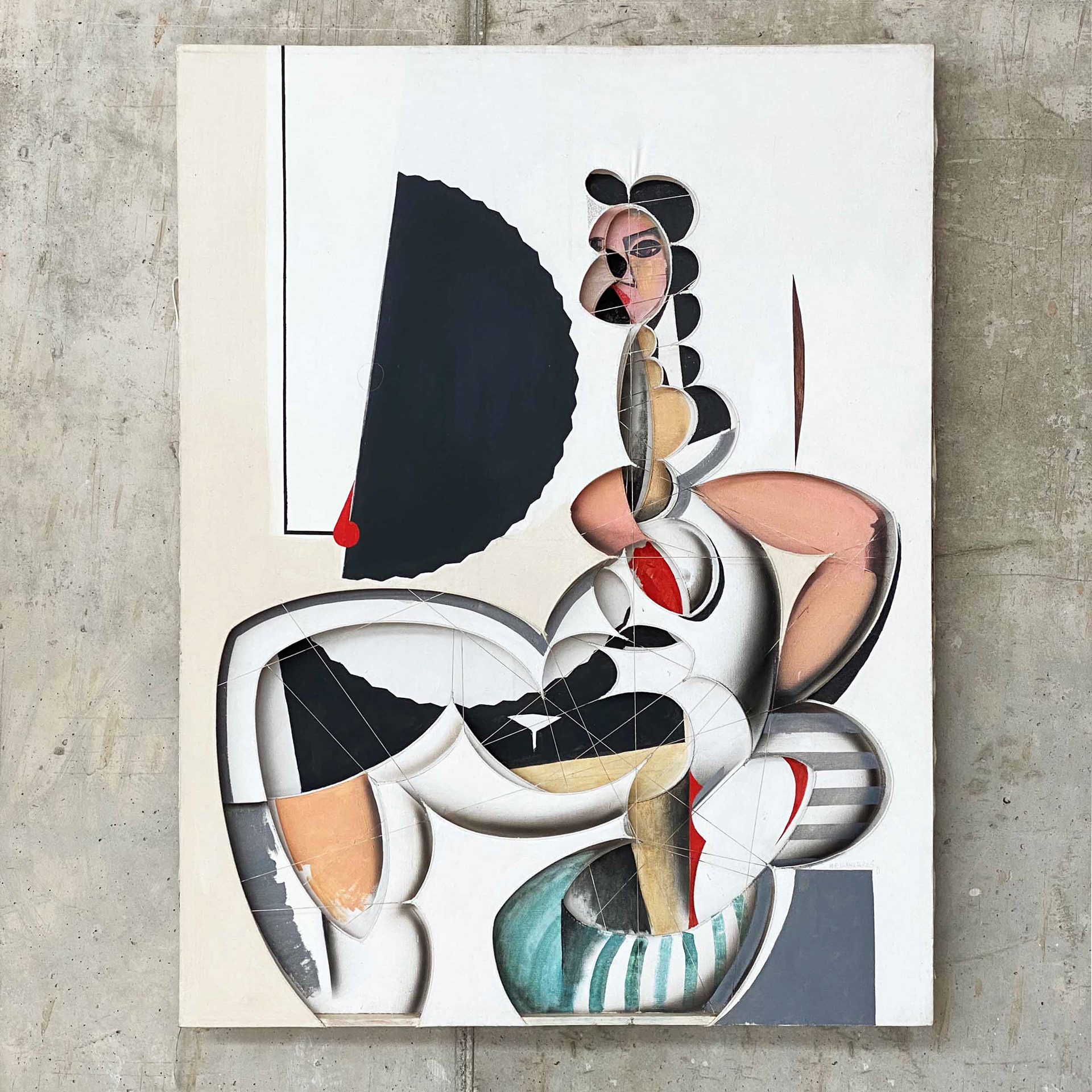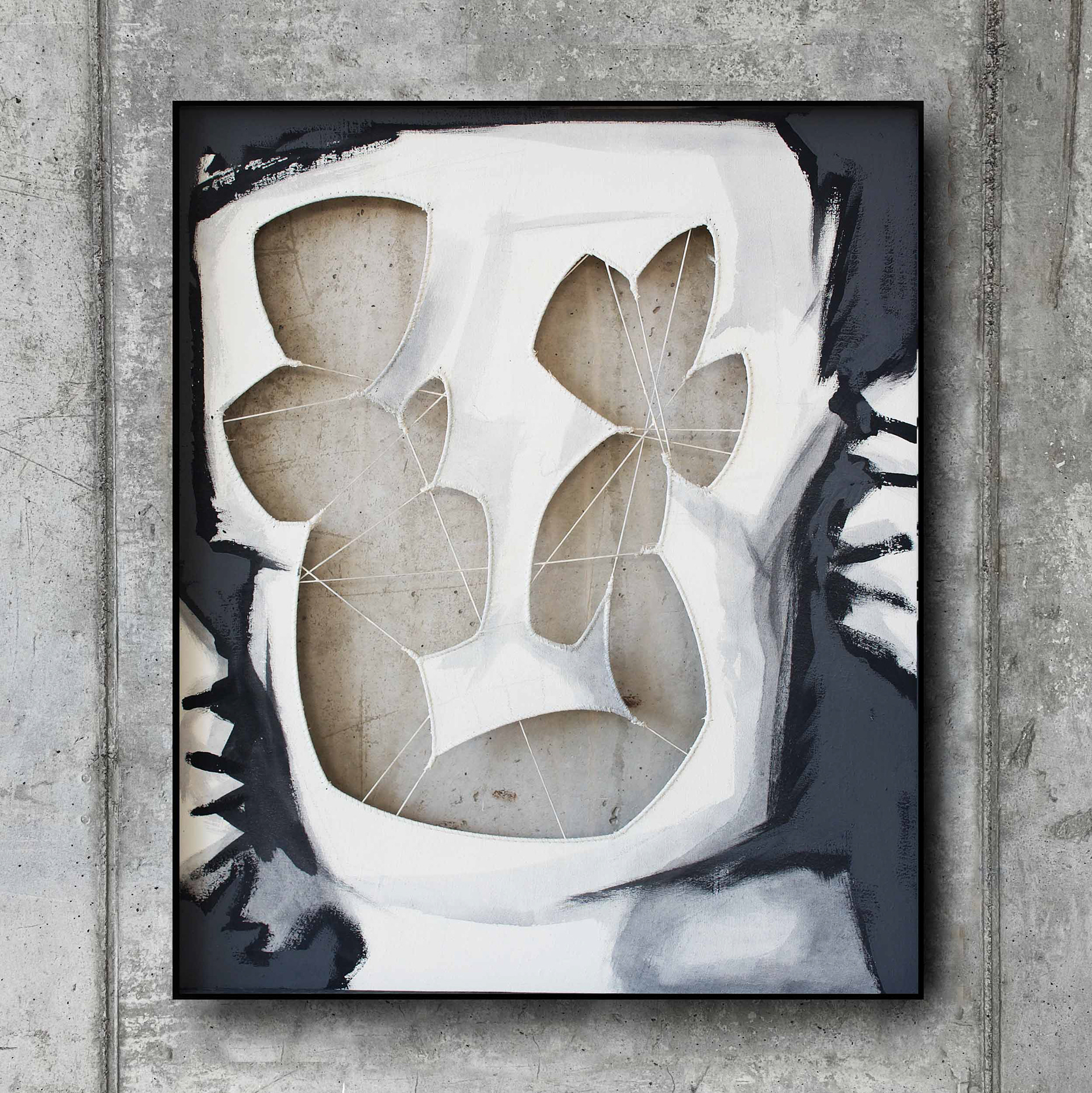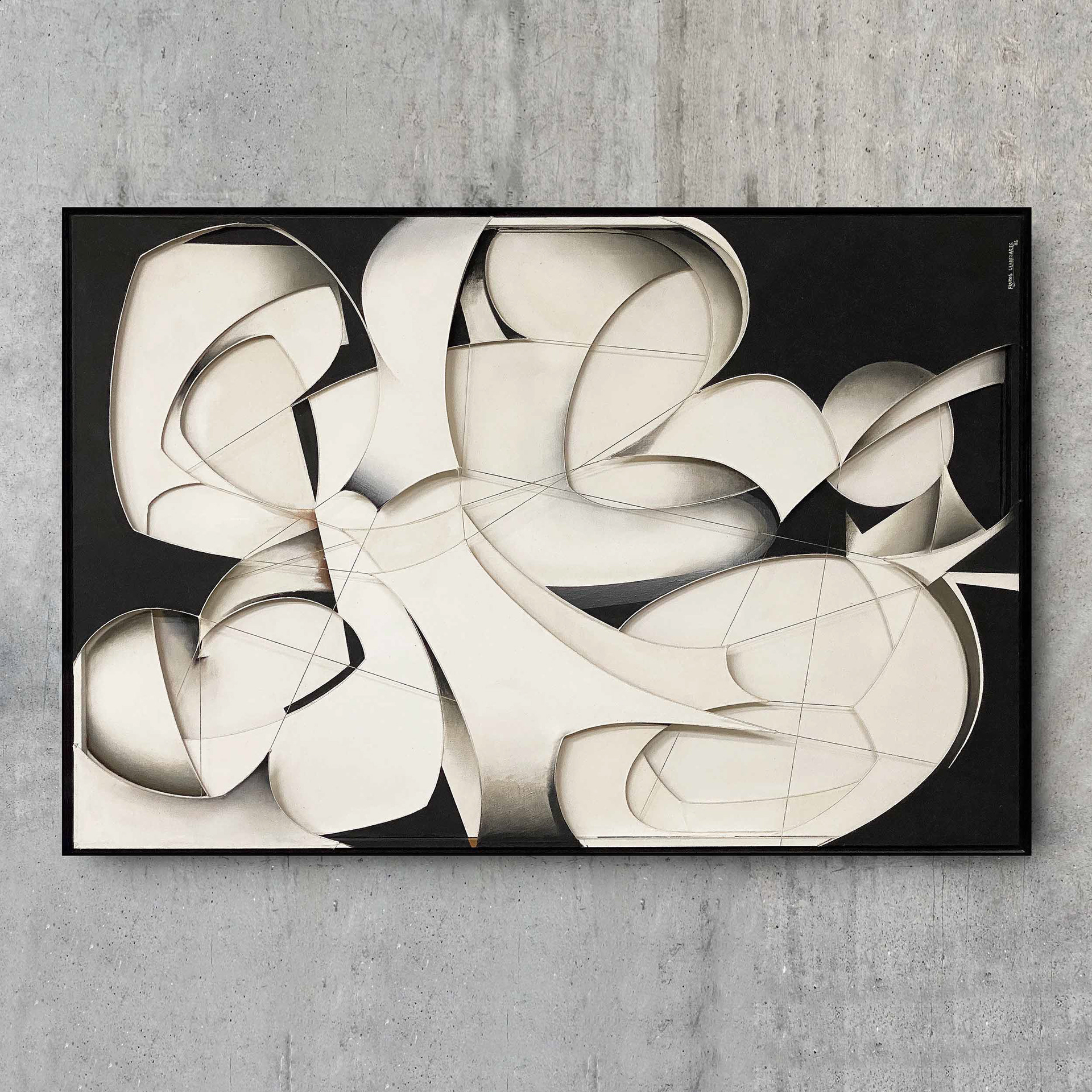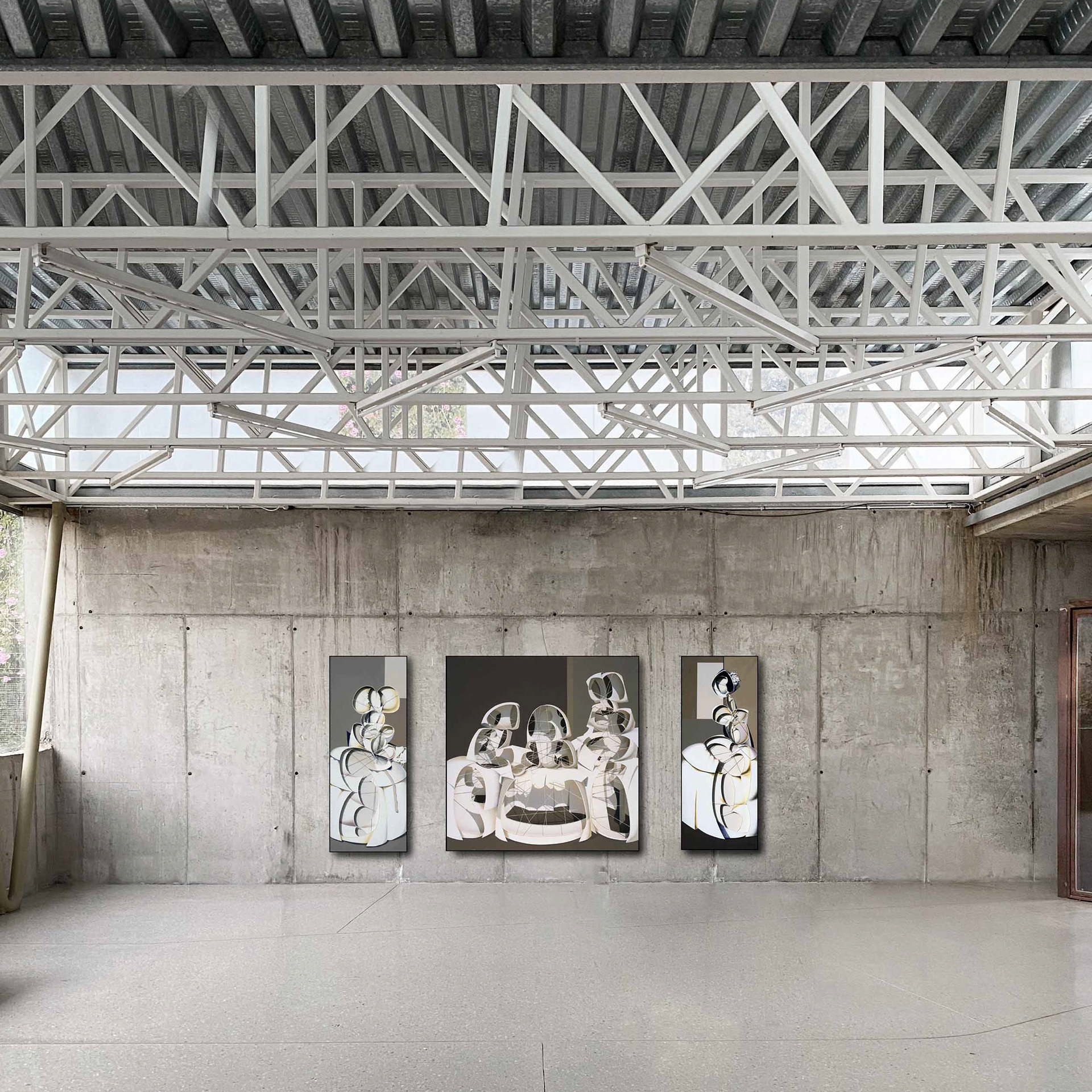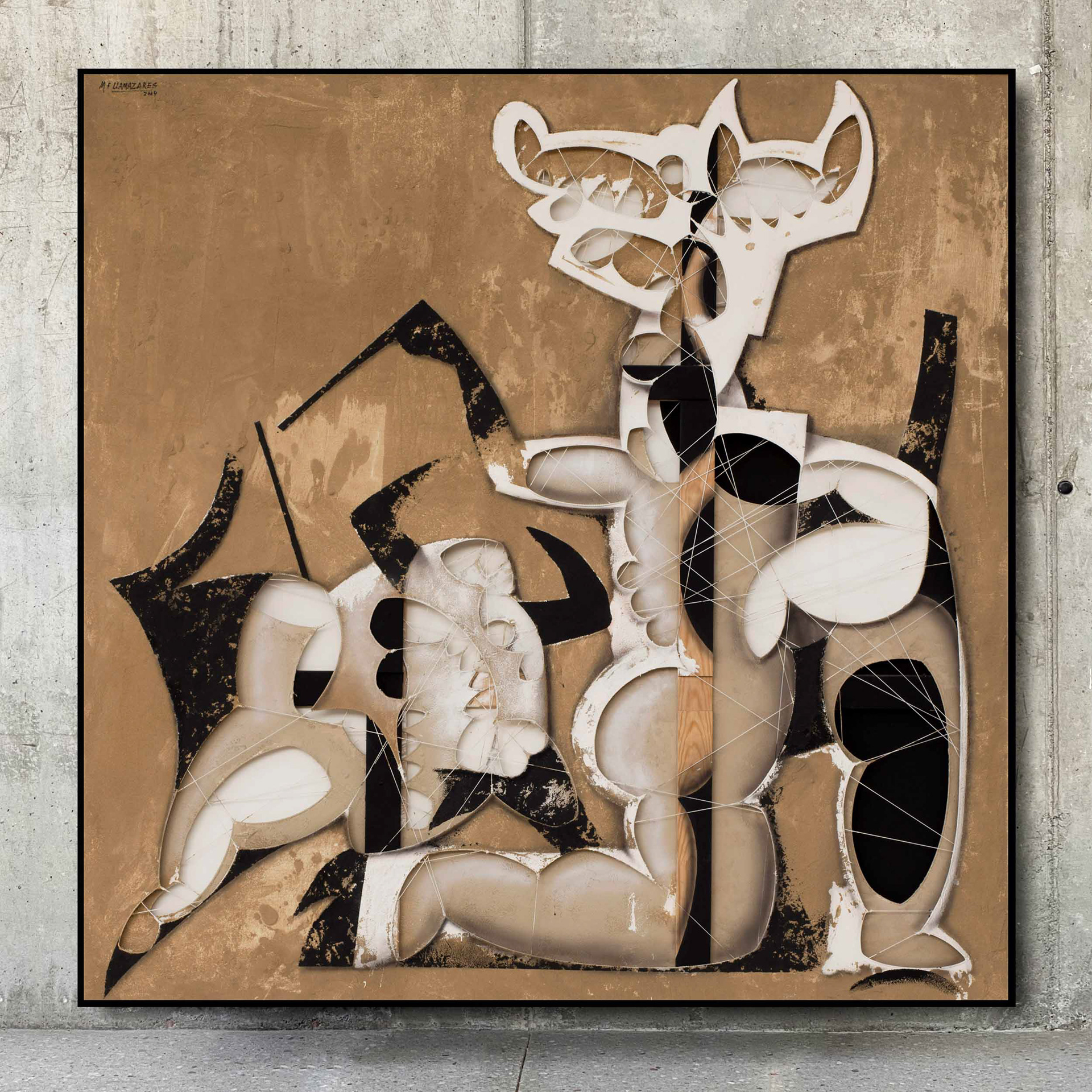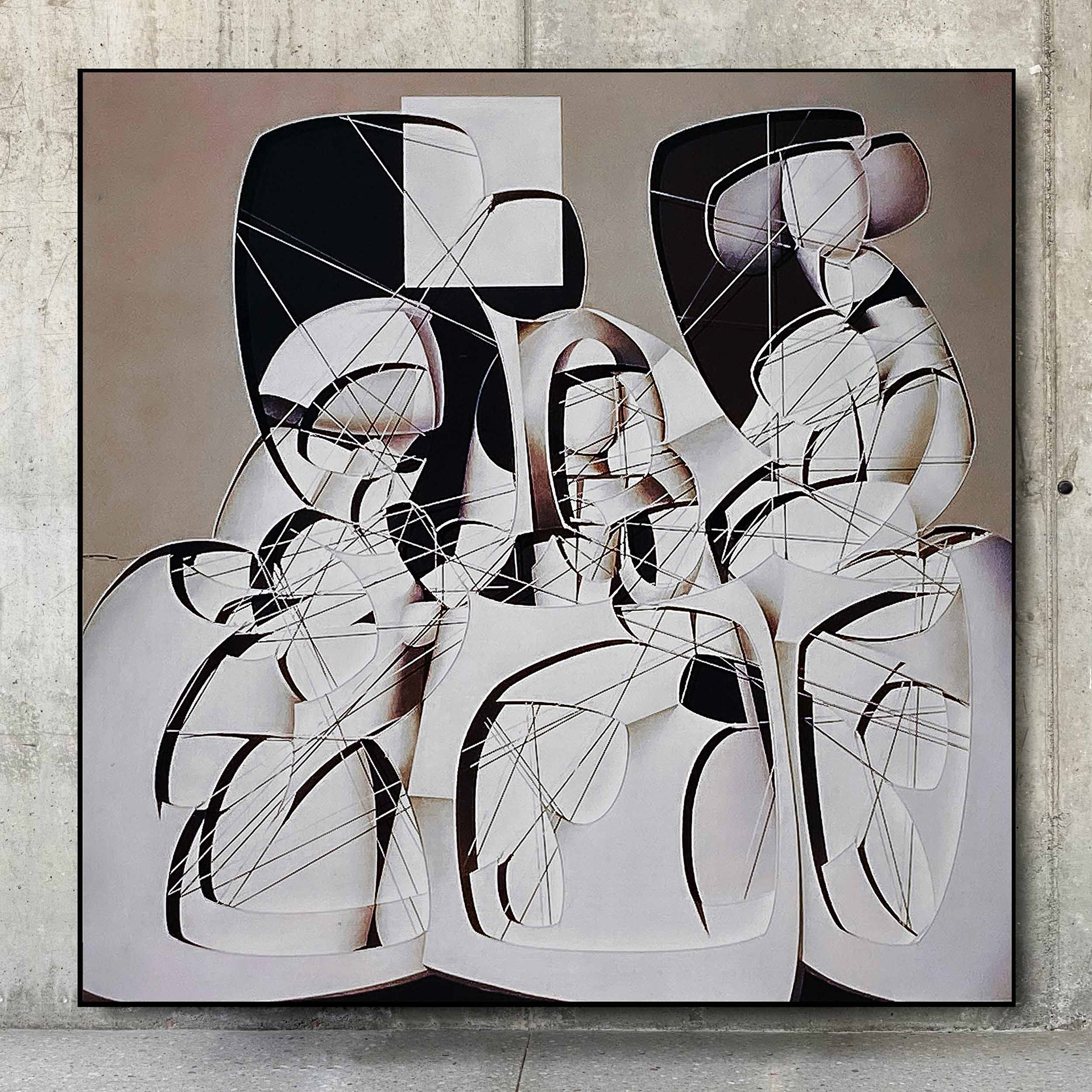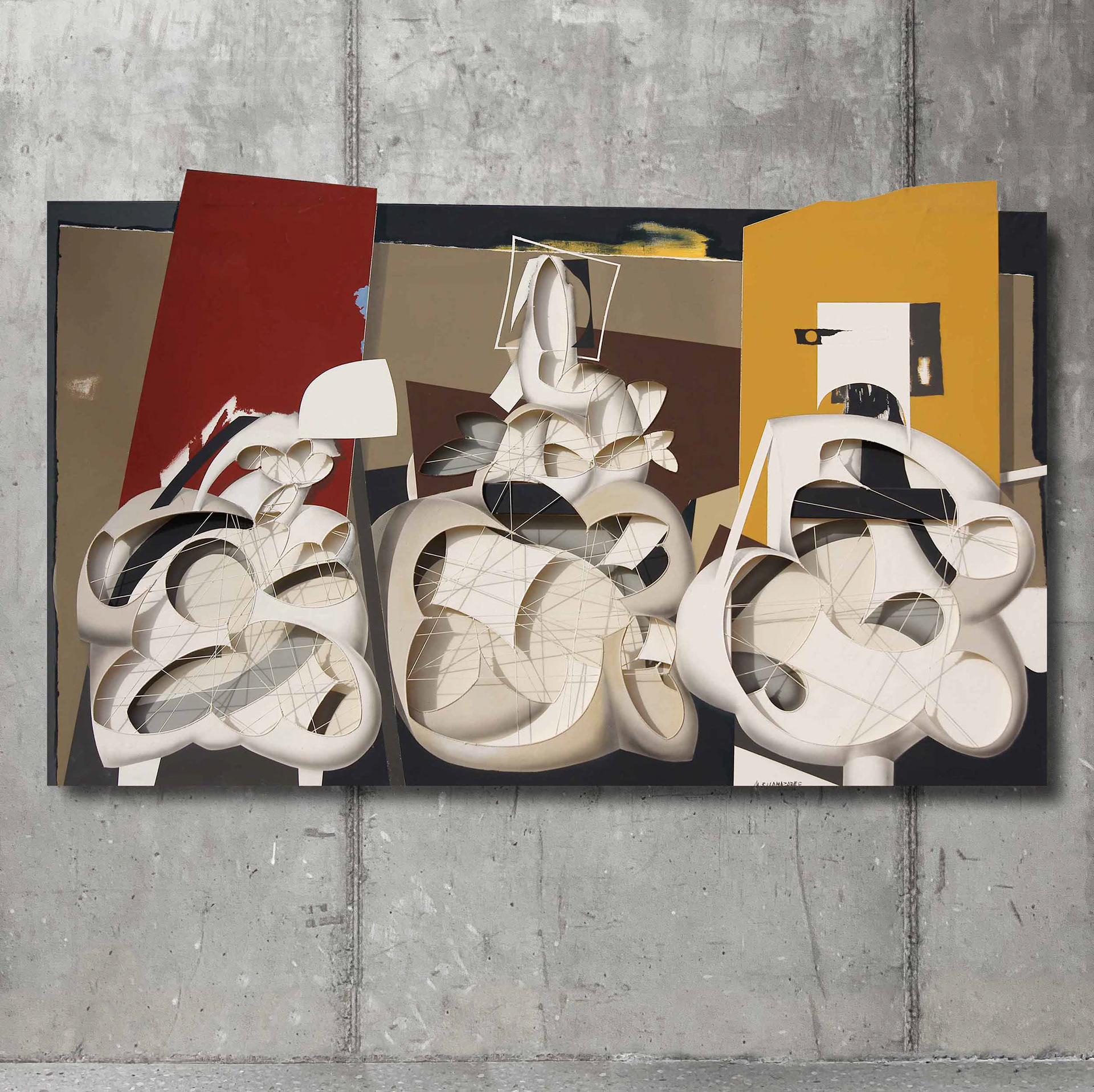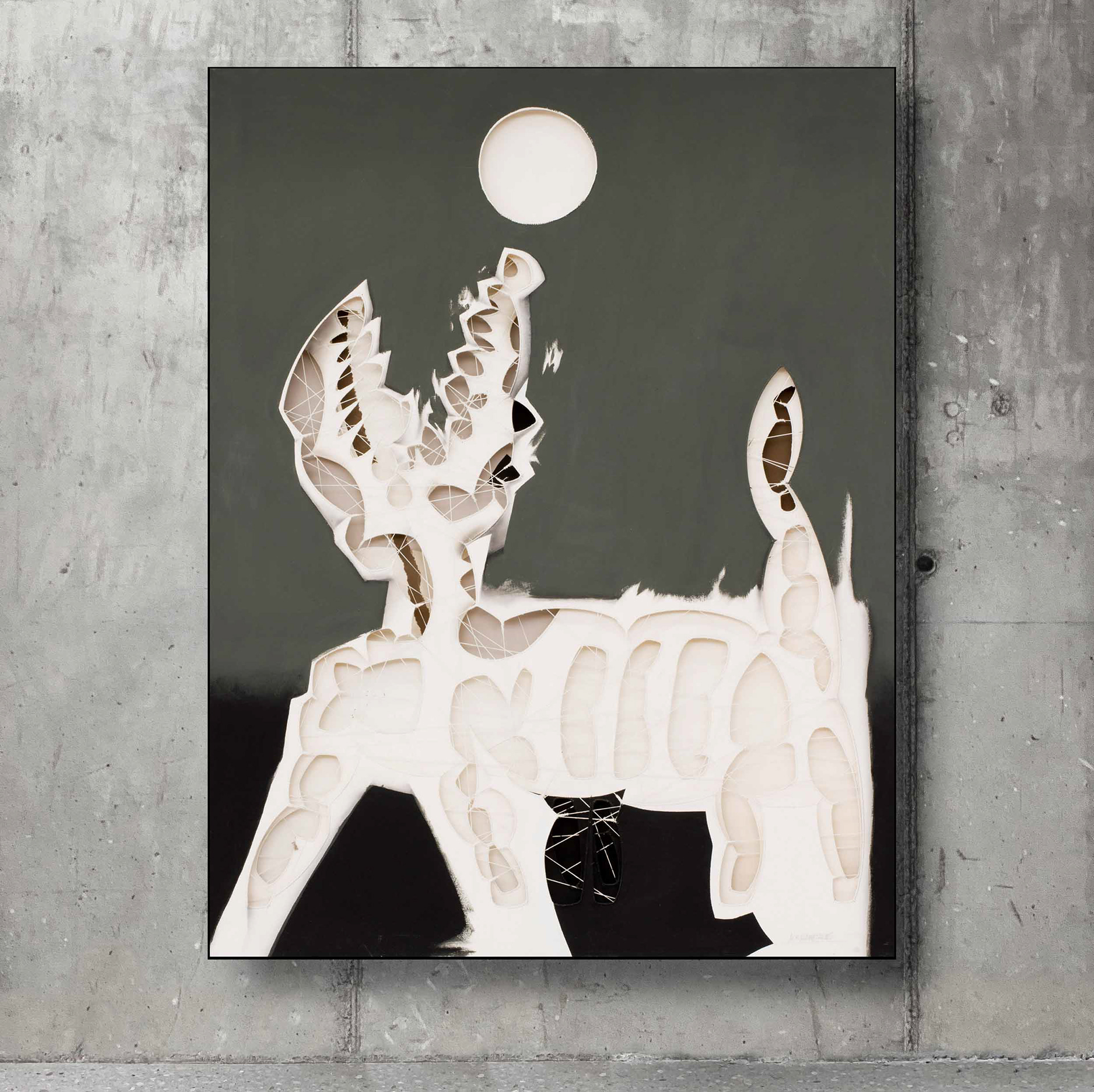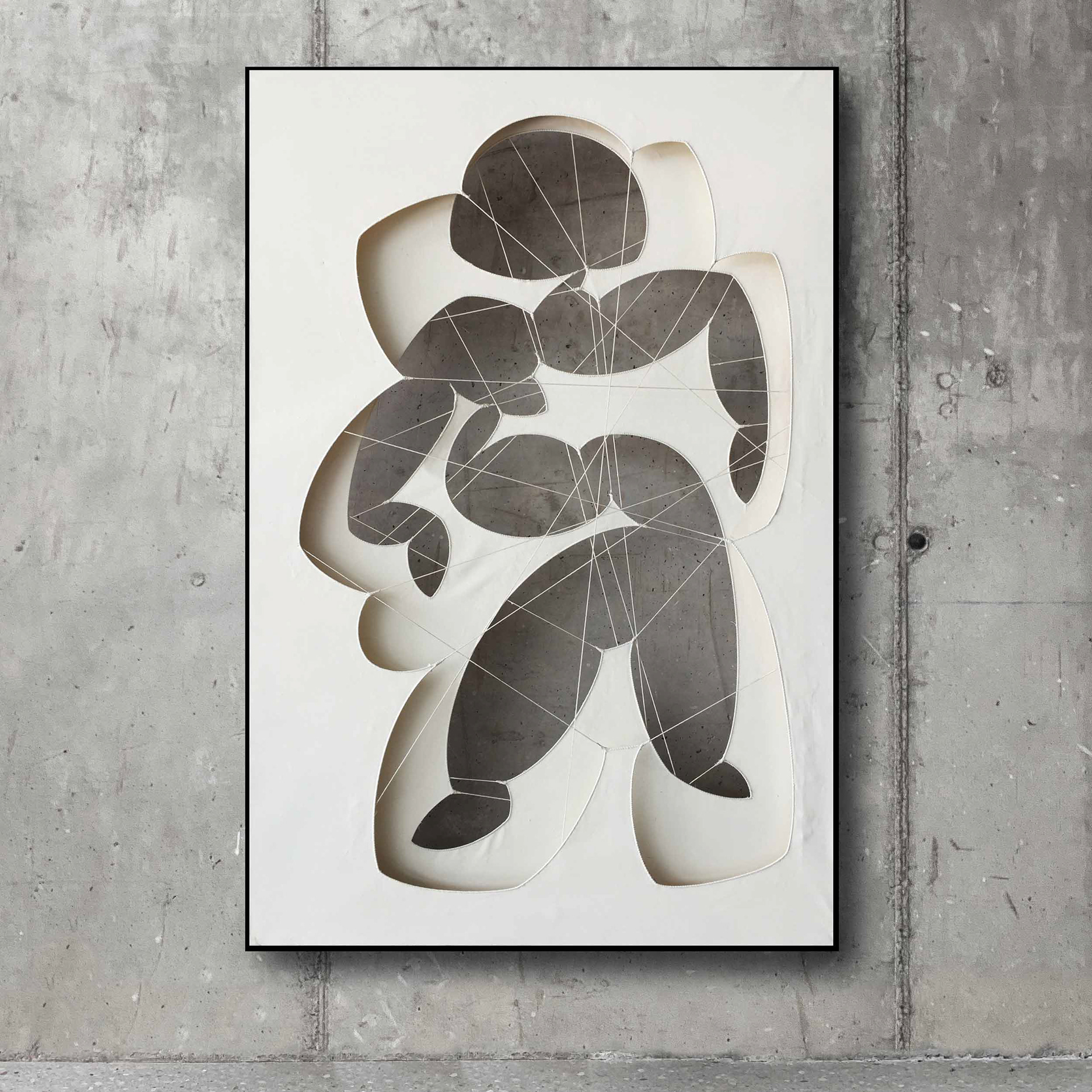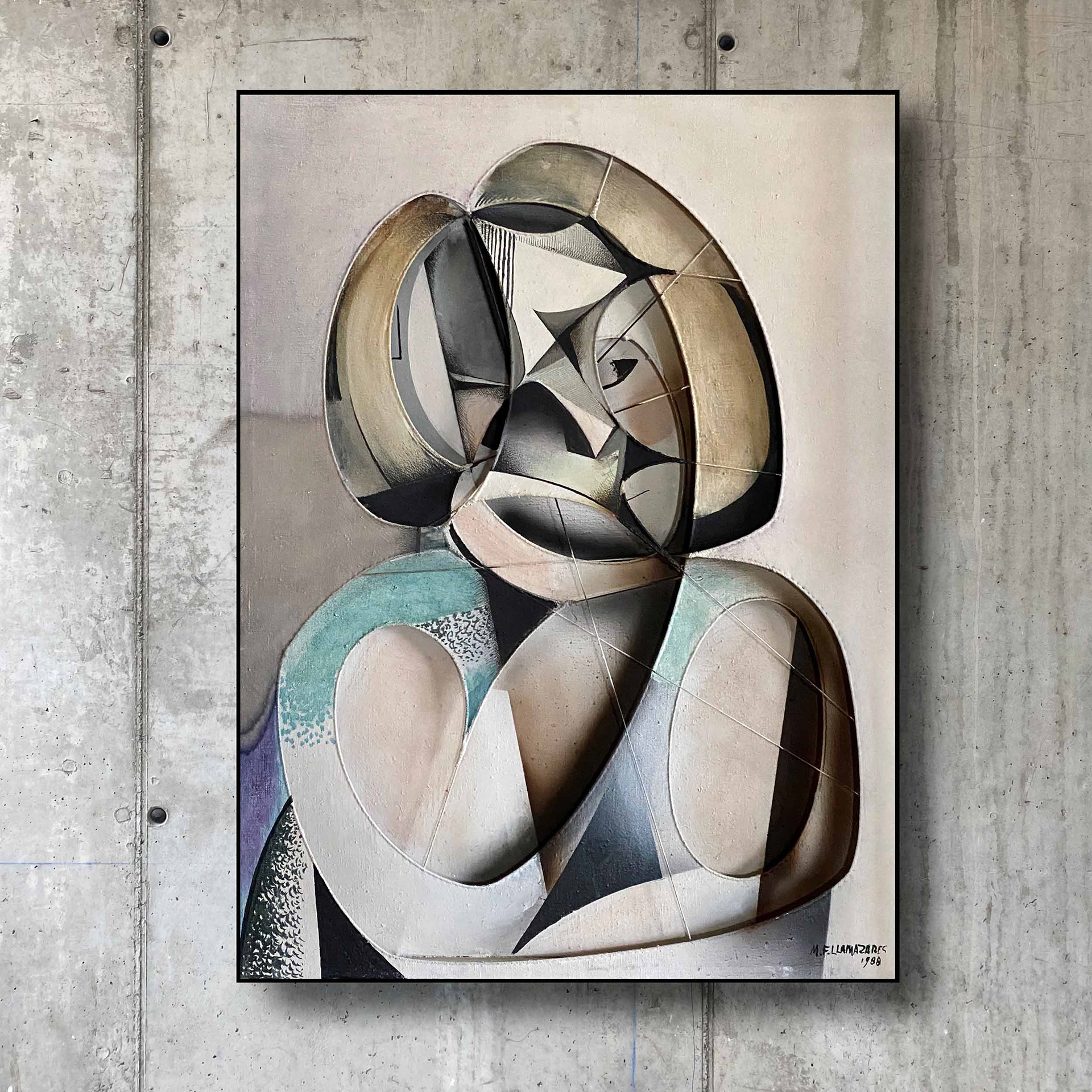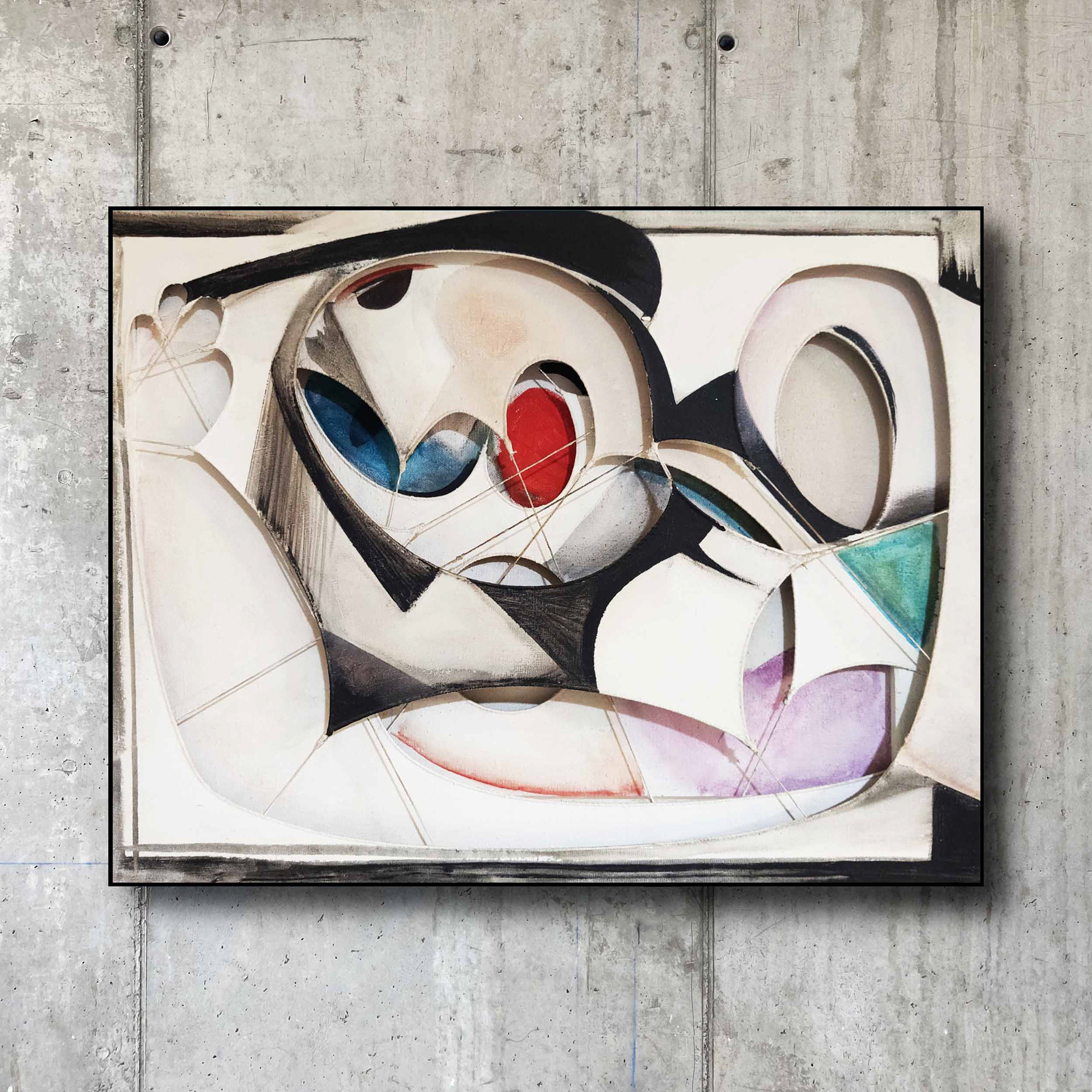En la etapa que transcurre desde 1982 hasta 2010 mi padre contempla diferentes formas de abordar la obra: primero surgirá el color (blanco, negro y algunos ocres); luego abandona el color y trabaja con “blancos puros”.
En estos cuadros es importante el juego de luces y sombras. Ya no se trata de “entrar” en el cuadro. Se trata de “salir” de él. La obra se estructura con formas geométricas (“formas emergentes”) que nacen de aquélla; pero más adelante el pintor renuncia a ese camino para retomar las formas geométricas “planas”, un retorno “dentro” del cuadro. Desde esas “formas planas” la obra evoluciona hacia una dinámica de finísimas líneas y entramados superando la división entre pintura y escultura, es decir, entre el objeto bi y tridimensional.
Nuestro autor concibe la posibilidad de crear planos de volumen en varias capas e incorporar un nuevo elemento: la luz. La proyección asimétrica de sus estructuras forradas en tela de lino consigue crear, de forma abstracta, la ilusión del volumen.
Sobre esas estructuras se sustentan diferentes temáticas (cráneos de animales, personajes de su entorno...) planteándose así la posibilidad de trabajar el “figurativismo”.
Mi padre se da cuenta entonces de que con la mencionada técnica puede hacerse figurativismo, por lo que a partir de este momento abandona el constructivismo y todos sus cuadros responden a una temática figurativa.
The stage that takes place from 1985 until 2010 my father contemplates different ways of approaching the work: first the color will emerge (white, black and some ochres); then he abandons color and works with "pure whites."
In these paintings the play of light and shadow is important. It is no longer a question of "entering" the picture. It's about "getting out" of it. The work is structured with geometric shapes ("emergent forms") that are born from it; but later the painter renounces that path to resume the "flat" geometric forms, a return "inside" the painting. From these "flat forms" the work evolves towards a dynamic of very fine lines and lattices overcoming the division between painting and sculpture, that is, between the two- and three-dimensional object.
Our author conceives the possibility of creating volume planes in several layers and incorporating a new element: light. The asymmetrical projection of its structures lined in linen fabric manages to create, in an abstract way, the illusion of volume.
On these structures are based different themes (skulls of animals, characters from their environment ...) thus raising the possibility of working on "figurativism".
Llamazares then realizes that with the aforementioned technique figurativism can be made, so from this moment he abandons constructivism and all his paintings respond to a figurative theme.



